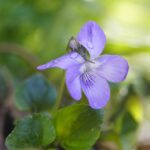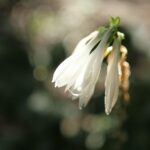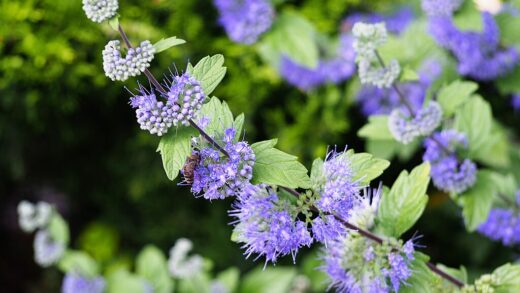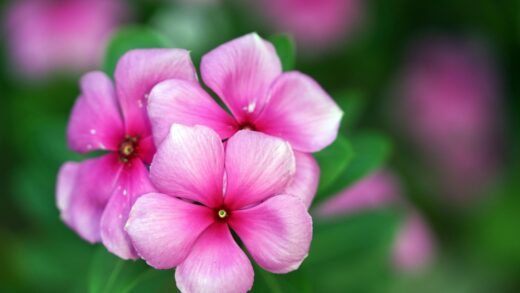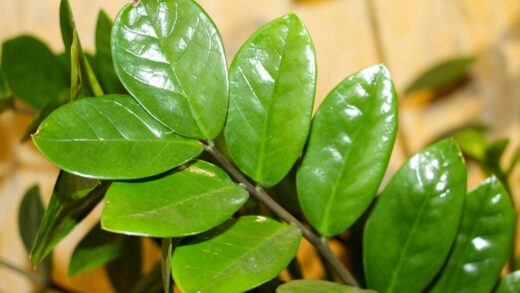Understanding and managing the water requirements of quince trees is a fundamental aspect of their cultivation, directly influencing their health, growth, and the quality of the fruit they produce. Quince trees, while possessing a degree of drought tolerance once their root systems are well-established, perform best when they receive a consistent and adequate supply of moisture throughout the growing season. The goal of a well-designed irrigation strategy is to supplement natural rainfall effectively, ensuring the soil profile in the root zone remains sufficiently hydrated without becoming waterlogged. This balance is critical for supporting all the tree’s physiological processes, from the initial flush of spring growth to the final swelling and ripening of the aromatic fruits in autumn.
The demand for water is not constant; it fluctuates significantly with the seasons and the tree’s developmental stage. The most critical period for moisture availability begins in the spring with bud break and flowering, and extends through the summer months when the fruit is actively developing and sizing up. During this peak demand period, a prolonged water deficit can lead to a cascade of negative consequences, including stunted shoot growth, poor fruit set, increased premature fruit drop, and the development of small, woody, or misshapen fruits. Therefore, diligent monitoring of soil moisture and timely irrigation are paramount during these crucial months.
Conversely, overwatering can be just as detrimental to a quince tree as underwatering. Saturated, anaerobic soil conditions deprive the roots of the oxygen they need to function and respire, which can lead to root suffocation and decay. This condition, commonly known as root rot, severely impairs the tree’s ability to absorb water and nutrients, paradoxically leading to symptoms of drought stress, such as wilting and yellowing leaves. A successful irrigation plan, therefore, relies on applying the right amount of water at the right time, allowing the soil to partially dry out between waterings.
The specific irrigation needs of a quince tree are also heavily influenced by external factors such as climate, soil type, and the age of the tree. Trees growing in hot, windy climates or in sandy soils that drain quickly will require more frequent watering than those in cooler regions or in heavier clay soils that retain moisture for longer. Similarly, young, newly planted trees with their limited root systems need more regular attention to watering than mature, well-established trees that can draw moisture from a much larger volume of soil. Adapting the irrigation schedule to these specific conditions is the key to efficient and effective water management.
Critical watering periods
The annual life cycle of a quince tree includes distinct phases where water availability is particularly critical to its success. The first of these periods occurs in the spring, from bud break through the flowering and fruit-set stage. Adequate moisture during this time is essential to support the rapid expansion of new leaves and shoots, and to ensure that the blossoms are healthy and properly hydrated for successful pollination. Water stress at this early stage can lead to poor fruit set, significantly reducing the potential size of the harvest before the season has even truly begun.
More articles on this topic
Following fruit set, the next critical period for irrigation spans the entire summer, which is the primary stage of fruit development and growth. The quince fruits swell and increase in size, a process that is overwhelmingly dependent on water uptake. A consistent supply of moisture throughout the summer months is necessary for the fruit cells to expand and for the tree to support the heavy crop load. Inconsistent watering during this phase can result in smaller fruit, and in severe cases, it can trigger the tree’s self-preservation mechanism, causing it to drop a significant portion of its developing fruit to conserve resources.
Another crucial window for water management occurs in the late summer and early autumn as the fruit enters its final ripening stage. While the rate of size increase may slow, the tree is now actively accumulating sugars and complex aromatic compounds that define the unique flavor and fragrance of quince. Sufficient water is still required to facilitate these processes and to prevent the fruit from becoming woody or mealy in texture. Maintaining adequate soil moisture right up until harvest helps to ensure the highest possible fruit quality, yielding quince that are both large and flavorful.
While often overlooked, the post-harvest period in autumn is also an important time for the tree to have access to adequate water. After the fruit has been picked, the tree works to store carbohydrates and nutrients in its roots and woody tissues, building up the energy reserves it will need to survive the winter and fuel the initial burst of growth the following spring. Ensuring the tree is not under drought stress during this recovery and preparation phase can have a significant impact on its health, winter hardiness, and its performance in the subsequent growing season.
Irrigation techniques and best practices
The most effective irrigation method for quince trees is one that delivers water directly to the root zone while minimizing waste through evaporation or runoff. Drip irrigation and soaker hoses are excellent choices as they apply water slowly and precisely where it is needed most, at the base of the tree over its root system. This slow application allows the water to penetrate deep into the soil profile rather than spreading out on the surface, encouraging the development of a deep and extensive root system. This, in turn, makes the tree more resilient and less dependent on frequent watering over the long term.
More articles on this topic
When irrigating, it is far more beneficial to provide deep, thorough soakings on an infrequent basis than it is to apply light, shallow waterings more frequently. A general rule of thumb for established trees is to moisten the soil to a depth of at least 45 to 60 centimeters with each irrigation session. This deep watering ensures that the entire root zone is replenished and provides a moisture reserve that the tree can draw upon for an extended period. Shallow watering, in contrast, only wets the top few inches of soil and encourages the development of a shallow root system that is highly vulnerable to drying out during hot weather.
The timing of irrigation can also influence its effectiveness and the health of the tree. Watering in the early morning is generally considered ideal. During this time, temperatures are cooler and winds are calmer, which means less water is lost to evaporation compared to watering in the middle of a hot, sunny day. Watering in the morning also allows the tree’s foliage and the soil surface to dry out over the course of the day, which can help to reduce the risk of fungal diseases that thrive in damp conditions. Evening watering can be an alternative, but it may leave the tree and surrounding area damp overnight, potentially increasing disease pressure.
To optimize water use and improve soil moisture retention, maintaining a layer of organic mulch around the base of the quince tree is a highly recommended practice. A 5 to 10-centimeter layer of mulch, such as wood chips, shredded bark, or straw, spread out to the tree’s drip line (but kept away from the immediate trunk to prevent rot) acts as a protective blanket. This mulch layer insulates the soil from the sun’s heat, significantly reduces moisture loss from evaporation, suppresses weed competition for water, and gradually improves the soil’s structure and water-holding capacity as it decomposes.
Recognizing signs of water stress
Identifying the signs of water stress in a quince tree is a crucial skill for any grower, as it allows for timely intervention before significant damage occurs. One of the most common and earliest indicators of underwatering is the wilting or drooping of leaves, particularly during the hottest part of the day. While a slight droop in extreme heat can be normal, if the leaves do not recover their turgidity in the cooler evening hours, it is a clear sign that the tree is not able to draw enough water from the soil to meet its needs.
Another key symptom to watch for is a change in the appearance of the foliage. The leaves of a water-stressed quince tree may lose their vibrant green color, appearing dull, grayish, or even taking on a slight yellowish cast. In more advanced stages of drought stress, the edges of the leaves may turn brown and crispy, a condition known as leaf scorch. The tree may also begin to shed its leaves prematurely, starting with the older, inner leaves, as a way to reduce water loss through transpiration and conserve its limited resources.
The fruit itself can also provide clear evidence of inadequate watering. If the tree is under drought stress during the fruit development period, the quince will likely be noticeably smaller than average at harvest time. In severe cases, the tree may shed a significant number of its immature fruits in June or July, a phenomenon often referred to as the “June drop,” although it can be exacerbated by water stress at any point in the summer. The skin of the fruit may also appear shriveled or wrinkled, and the texture of the flesh can become tough and woody.
Conversely, it is also important to recognize the signs of overwatering, which can be surprisingly similar to those of underwatering. A tree suffering from waterlogged soil and root rot will also exhibit yellowing leaves and wilting because the damaged roots are unable to function properly to absorb water. A key difference, however, is the condition of the soil itself; if the soil around the tree remains consistently soggy or has a sour smell, overwatering is the likely culprit. Additionally, a tree stressed by excess water may show stunted growth and a general lack of vigor.
Adjusting for soil type and climate
The frequency and volume of irrigation required by a quince tree are not universal; they must be carefully adjusted based on the specific soil type in which the tree is planted. Sandy soils, for example, have large particles and large pore spaces, which means they drain very quickly and have a low water-holding capacity. Trees planted in sandy soil will need to be watered more frequently, with shorter irrigation durations, to ensure they have a consistent supply of moisture without causing nutrients to be leached away too rapidly.
In contrast, heavy clay soils are composed of very fine particles, resulting in a dense structure that can hold a large amount of water but drains very slowly. Quince trees in clay soil require less frequent irrigation, but each watering needs to be applied slowly to allow the water to penetrate the soil without running off the surface. It is especially important to avoid overwatering in clay soils, as their poor drainage makes them highly susceptible to becoming waterlogged, which can lead to root rot and other serious health problems for the tree.
Climatic conditions play an arguably even larger role in determining a quince tree’s water needs. In hot, dry, and windy climates, the rate of evapotranspiration—the combined loss of water from the soil surface and the plant’s leaves—is much higher. Consequently, trees in these regions will consume water much more rapidly and will require significantly more irrigation to stay hydrated compared to trees grown in cooler, more humid maritime or temperate climates. Monitoring local weather forecasts and using tools like an evaporation pan can help in making more informed decisions about when and how much to irrigate.
The age and size of the tree also factor into the irrigation equation. A newly planted sapling with a small, developing root system has a very limited ability to seek out water and is highly dependent on regular watering to get established. As the tree matures over several years, its root system becomes much more extensive and can explore a larger volume of soil, making it more self-sufficient and resilient to short-term dry spells. While an established, mature quince tree will still require supplemental irrigation during prolonged droughts, it will generally need less frequent attention than a young tree.








